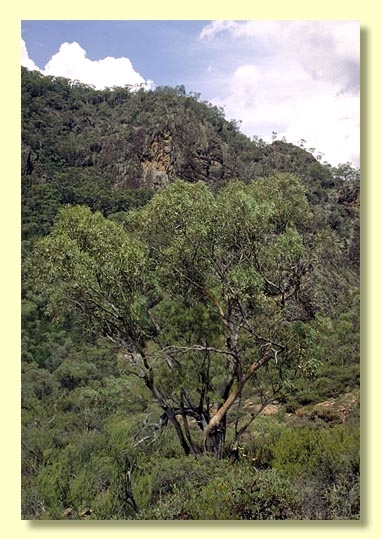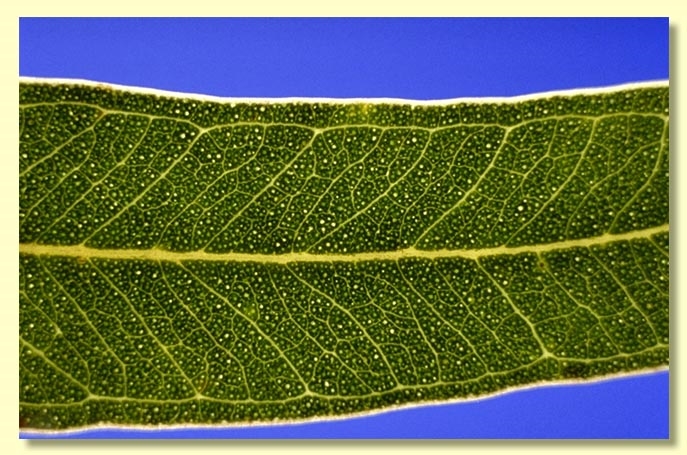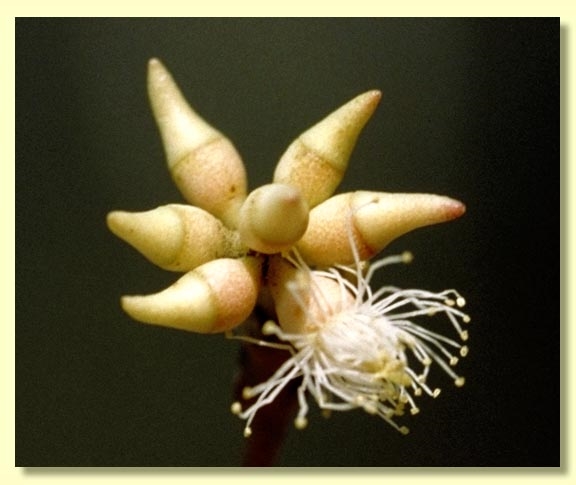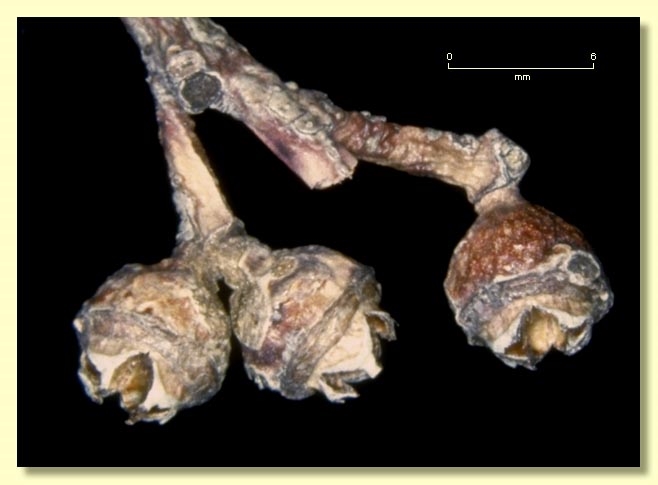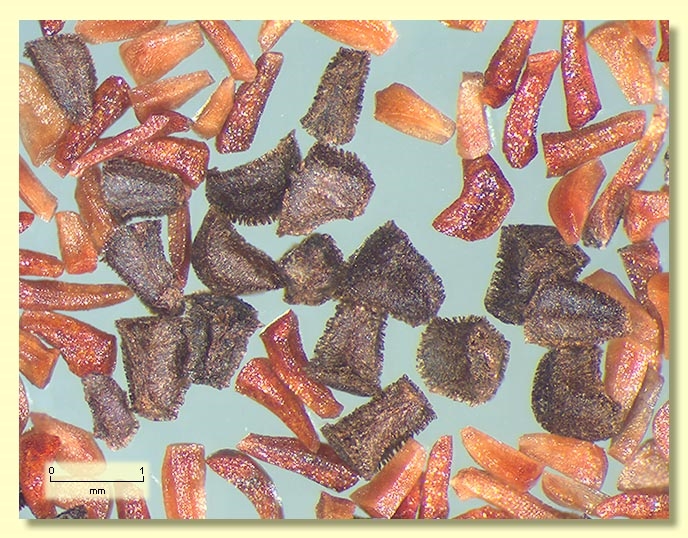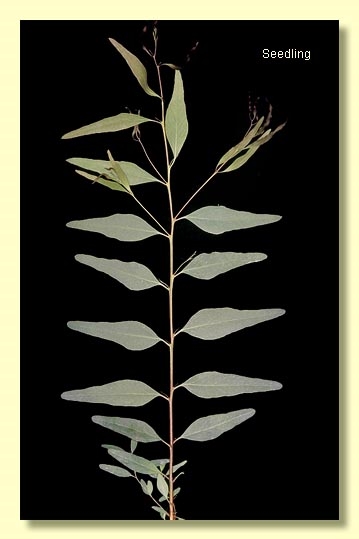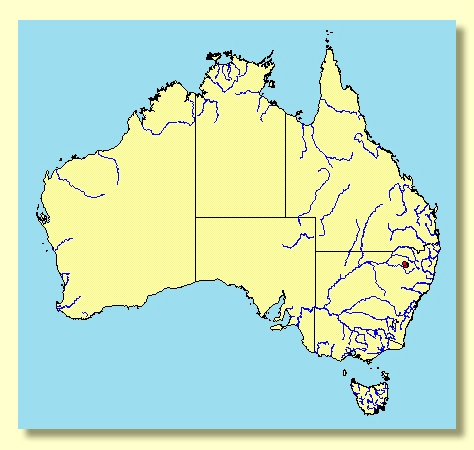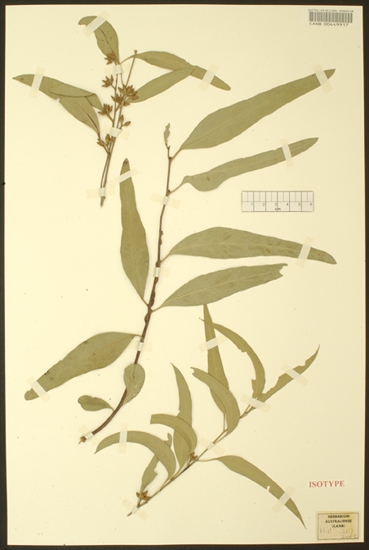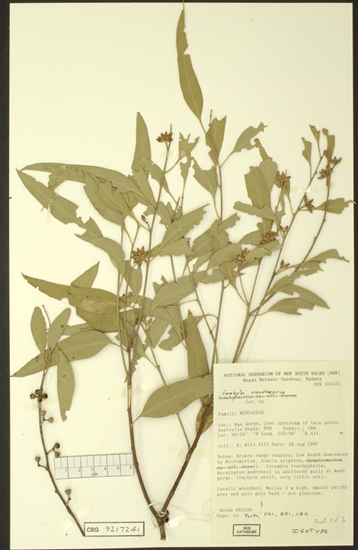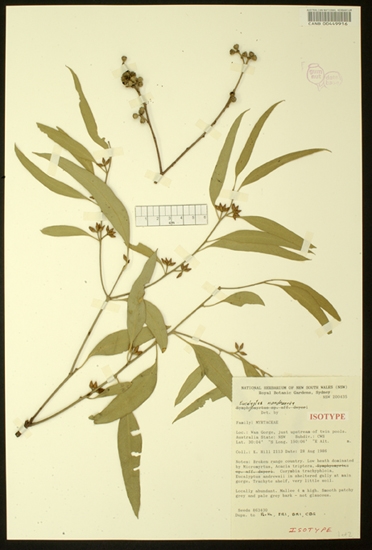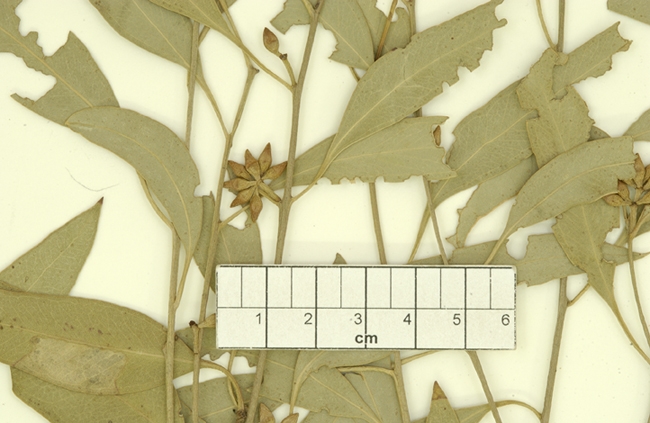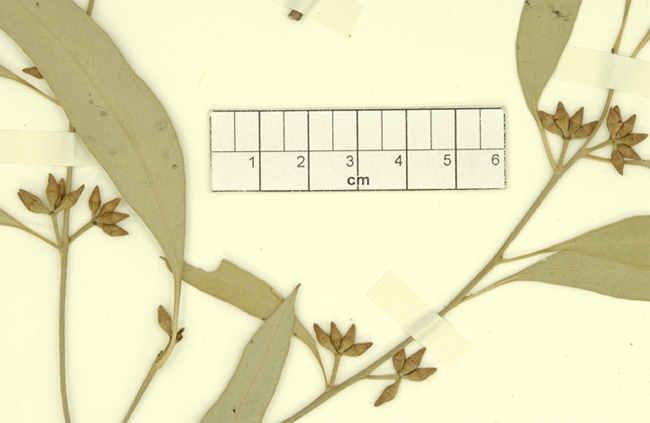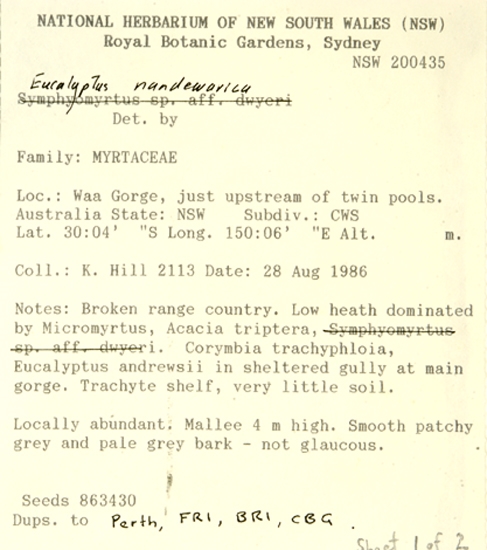Euclid - Online edition
Eucalyptus nandewarica
Eucalyptus | Symphyomyrtus | Exsertaria | Erythroxylon
Bark smooth throughout or with persistent rough, fibrous bark on base of trunk for ca 1 m; smooth bark mottled white, grey, brown, cream or orange.
Juvenile growth (coppice or field seedlings to 50 cm): stem rounded or square in cross-section; juvenile leaves always petiolate, opposite for 4 to 6 nodes then alternate, lanceolate, 6–12.5 cm long, 1–5 cm wide, dull, green.
Adult leaves alternate, petiole 0.7–2 cm long; blade lanceolate, 5–15 cm long, 0.8–3 cm wide, base tapering to petiole, concolorous, dull, light green, side-veins greater than 45° to midrib, sparsely to moderately reticulate, intramarginal vein parallel to and remote from margin, oil glands island.
Inflorescence axillary unbranched, peduncles 0.3–0.8 cm long, buds 3 or 7, sessile to shortly pedicellate (pedicels 0–0.2 cm long). Mature buds ovoid to diamond-shaped (0.6–0.9 cm long, 0.3–0.35 cm wide), yellow or creamy, scar present, operculum conical (0.3–0.6 cm long), stamens irregularly flexed, anthers versatile, cuboid, dehiscing by longitudinal slits, style long, stigma tapered, locules 3 or 4, the placentae each with 4 or 5 vertical ovule rows (the rows may be obscure). Flowers white.
Fruit shortly pedicellate (0.1 cm long), cup-shaped or hemispherical, 0.3–0.4 cm long, 0.5–0.6 cm wide, disc slightly raised and convex or oblique, to slightly descending, valves 3 or 4, strongly exserted.
Seeds grey to black or brown, 0.8–1.3 mm long, pyramidal or cuboid, dorsal surface pitted, hilum terminal.
Cultivated seedlings (measured at ca node 10): cotyledons reniform to oblong; stems square in cross-section; leaves always petiolate, opposite for 5 or 6 nodes then becoming alternate, broadly lanceolate, 10–12.5 cm long, 3–5 cm wide, base tapering, apex pointed, dull, green to grey-green.
Flowering has been recorded in December.
A mallee or small tree restricted to lower slopes of the Nandewar Ranges, north-east of Narrabri in northern New South Wales (e.g. Waa Gorge). It is a red gum with black to brown single-coated seed and is notable in having small buds and fruit, irregularly flexed stamens and relatively narrow juvenile leaves.
Eucalyptus nandewarica belongs to the group of red gums which is distinguished by having fruit where the disc is united to the ovary roof, valves esxerted, and by the black, toothed, cuboid to pyramidal single-coated seed. Fifteen species belong to this group: E. amplifolia, E. blakelyi, E. chloroclada, E. dealbata, E. dwyeri, E. flindersii, E. gillenii, E. glaucina, E. infera, E. kabiana, E. nandewarica, E. nudicaulis, E. tereticornis, E. terrica and E. vicina.
Within this group, E. nandewarica is considered to be closest to E. dealbata from which it differs by having narrower juvenile and adult leaves, generally non-glaucous buds and fruit and the frequently three-budded inflorescences. E. nandewarica must also be very close to E. dwyeri and differs only marginally by the slightly smaller buds and fruit (sometimes in threes). E. gillenii and E. nudicaulis are distinguished by having much larger fruit, usually greater than 0.7 cm wide and usually narrower than 0.7 cm in E. nandewarica.
All the other smooth-barked members of this group have much larger ovate to orbicular to deltoid juvenile leaves.

